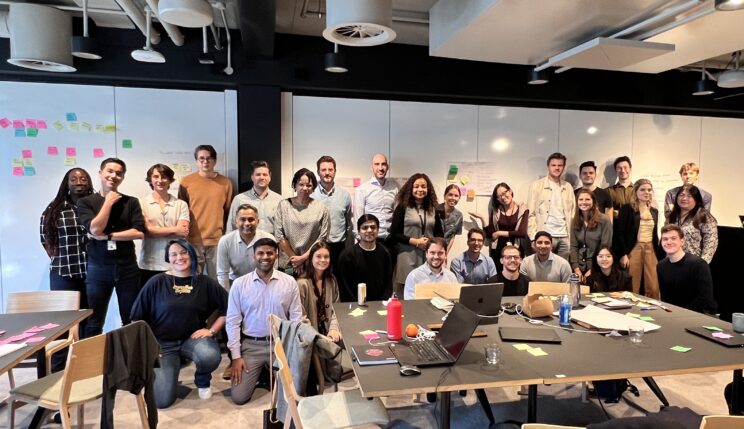Today I had a Miele repairperson visit, and as I was rolling away the rug from in front of the washing machine, I thought… “I should wipe those breakfast crumbs”.
My mother’s voice was in my head. 🤦♀️
“If it is clean and orderly, visitors will respect the space. If it is a mess, they will feel it is all right to make a mess of it”.
She is right, of course. You won’t dare to draw with sharpie on a wall if when you look down you can see your eyeballs reflected in the polished floor.
Some visual styles, extreme order, and immaculate polish can intimidate.
What it made me think of instead, is how this affects workshops.
When I run workshops, I make sure the artefacts we are using have a linear relationship between how much I want people to contribute to them / destroy them, and how finished they actually are.
If I make a service blueprint with perfect boxes and branding and realistic photography and print it on a plotter and stick it up, everyone will look at it in awe and assume it is the finished product. We all have this reaction, even seasoned professionals. The more polished and real it looks, the more we instinctively think it is and want to respect it.
So when I run workshops and require contributions, creativity, playfulness and a suspension of reality and criticism while we invent possible futures, I make sure what I have on the wall looks and feels UNfinished. Sketchy. Multi-coloured. Playful.

In one instance, that meant writing certain things on a poster by hand.
In another, it meant having people walk into a room where the walls were covered in post-its with even email printouts stuck on.
It means that if I want someone’s feedback on the content, I strip it of the style. I show wireframes or make a hand-sketch. It is less distracting, and allows us to focus on shaping the low-resolution thing that clearly is unfinished and is calling to someone to grab a pen and draw in that missing line.
And it’s that desire you instil, that affordance in the artefact that makes you want to change it, that is the magic great workshops are made of.
Next time you plan and run a workshop, consider how “finished” your artefacts look, and try to bring some “unfinishedness” to them so that you will give obvious permission to contributions, collaboration, and creativity.
When I was giving Design Thinking training at BCG, I only needed post its, sharpies, flipcharts, and some slides to run the sessions. Everything was a bit scrappy and joyful. Some of the ideas we generate in there I have (very weirdly) seen as products on shelves recently.

Never underestimate the power of paper, pen, and permission to be messy!
Still curious about running excellent workshops?
How to prepare for and run a Design Thinking / Gamestorming / Creative workshop. And what to do with the outputs, too.

